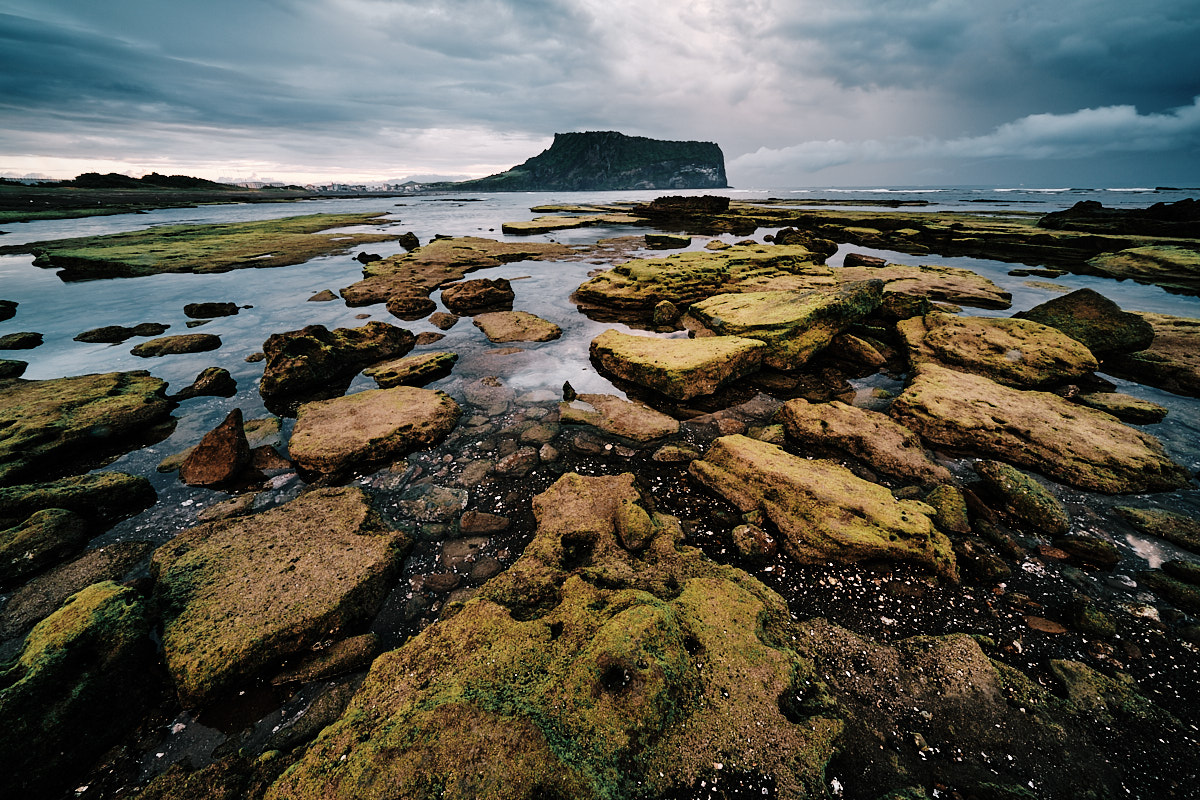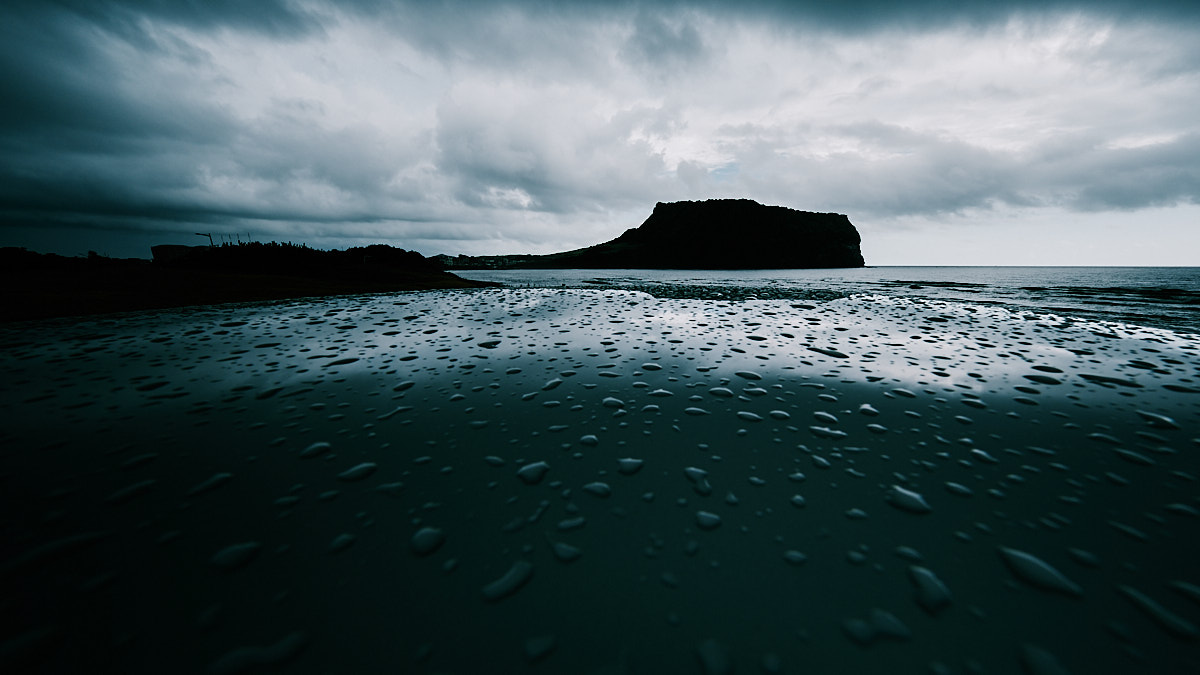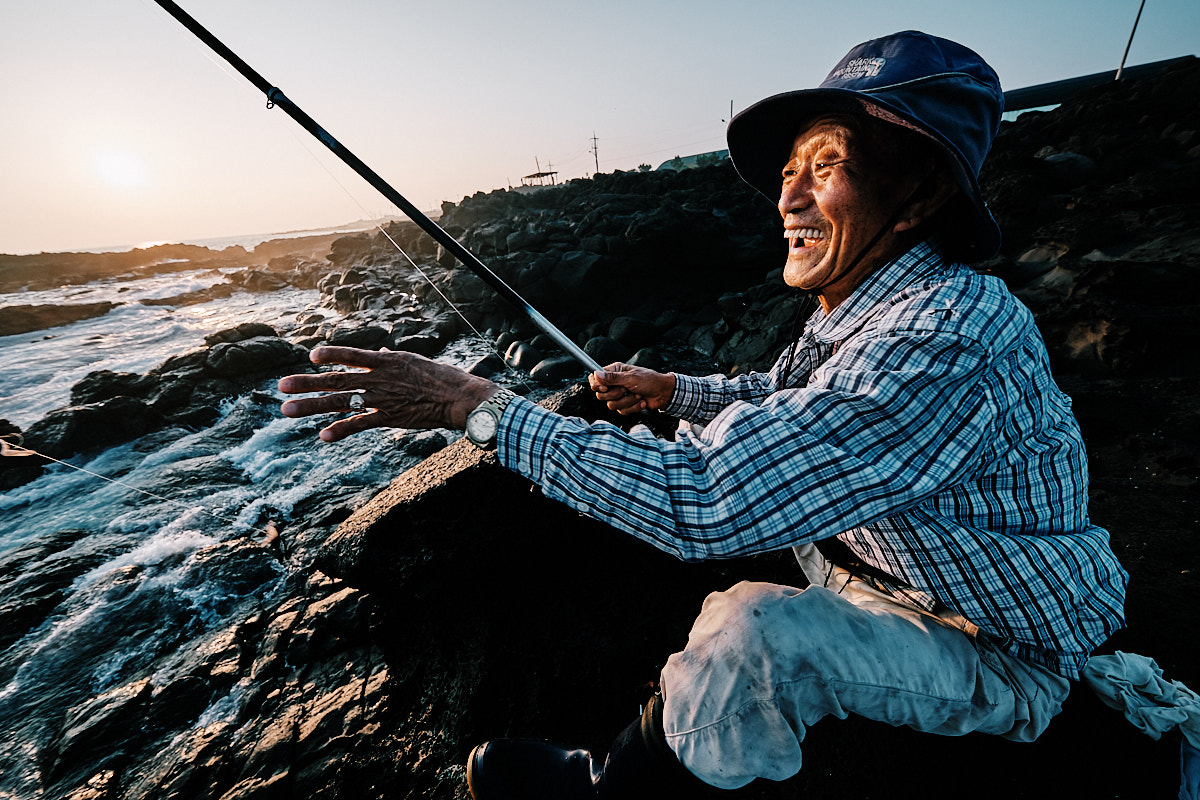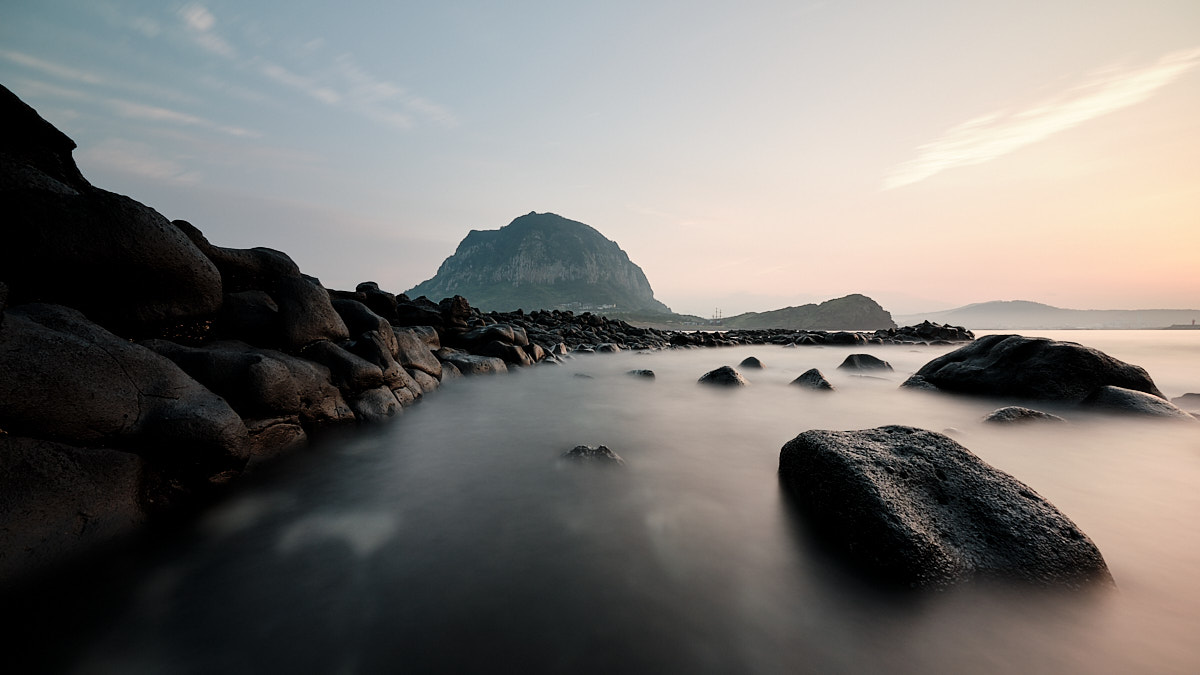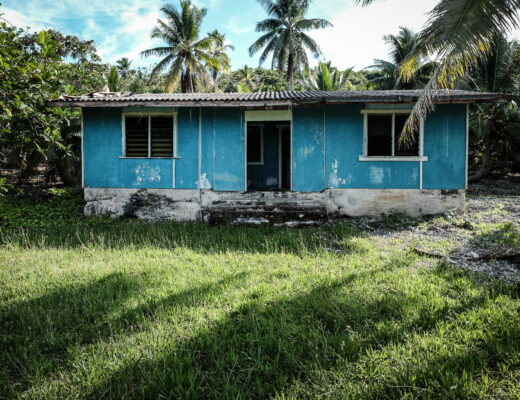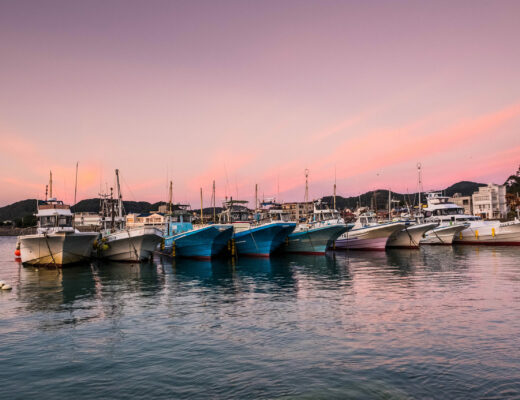I love a wide-angle lens. I love it even more when I can attach the descriptor “ultra” to the front of it. There are so many interesting ways you can make use of the perspective distortion inherent in these lenses. One of my favourite little lenses to work with is the Laowa 9mm f/2.8, so you can imagine how excited I was to have the opportunity to take the slightly-wider Fujifilm XF 8-16mm f/2.8 to Jeju Island for a week.
This is not going to be a review, our good friend Take Kayo, among many others, have already taken a good look at this lens. It’s also not going to be a comparison between this and other lenses. That horse has well and truly passed on. Today, I’m going to walk you through what it was like to use this lens for a week in the middle of our summer monsoon.
Monsoon time for us means plenty of rain, high winds, and, if we’re lucky, some gorgeous sunrises and sunsets. So, my good friend Wesley Chang and I headed down to Jeju Island for a last-minute getaway to soothe our souls a little before the busy season kicked in for us. We shot a couple of sunrises and a couple of sunsets and were rained on pretty much the rest of the time, but it gave me a good chance to get a feel for the XF8-16mm in the field.
The very first thing I noticed as I was walking out of the Fujifilm offices here in Seoul was the weight of the lens. There’s a reason the campaign for this used the words “Monster Glass.” I felt like I was going back into full-frame DSLR territory with this thing in my bag. So, while I’d originally planned to take a shoulder bag for the trip, I repacked that night and took my trusty f-stop Loka UL backpack.
The morning of our arrival on the island was spent at Seongsan Sunrise Peak with a beautifully dramatic sunrise as the backdrop. The first frame I made was of the burning horizon behind the peak itself. Making use of the 8mm focal length to really stretch out the lines in the clouds, I locked in my first composition.
I wanted the storm to dominate the mood of the frame, so I exposed for the highlights and added a 10 stop filter (the only strength I had with me – a 4 stop would have been more appropriate for the mage I wanted to make) to the front of my Haida M15 filter folder. Since the sun hadn’t risen yet and I didn’t want to completely streak the clouds, I made this image at f/2.8 with a 10 second exposure. While sharp details aren’t the focus of this scene, it’s great to see that this lens performs fantastically wide open.
One thing to note is that the rocks in the foreground are a mere 2-3 metres away. This is the wide-angle lens at work. They appear much smaller than they did in real life, but around equal in size to the massive volcanic cone in the background.
My next composition illustrates the opposite effect. As I brought myself physically closer to some of the rocks, they rendered much larger in the frame. Here, by moving closer and lowering my camera position, I was able to really emphasize the rocks in the foreground. Even though they’re diminutive in size compared to the volcanic cone, they appear much larger in the photograph. We’ll take a look at more examples of just what an 8mm lens can do to the size of objects down below.
For one final experiment with the 8mm end of the lens, I placed the camera on the roof of my car as the rain started to come down. Here you see the water droplets on the roof rendered completely out of perspective with the background. This is where the real fun lies with a wide-angle lens and the main reason I would consider investing in the XF8-16mm. It is the widest rectilinear lens available for our X series cameras and thus gives the most pronounced perspective distortion.
The following evening, the sunset was a little lacklustre for landscape work, so we found a group of fishermen on a rocky outcrop and I decided to see what portraits and documentary might look like at the wide end of this lens.
In this first frame, I’m perhaps 10 metres away from the fishermen you see here and mere centimetres from the rock I’m using to cover all the other mess that would be in my composition. This curve in the rock is barely larger than the end of the lens, but here the 8mm focal length renders it in gigantic proportion and gives the sense that the fishermen are tiny within the landscape. As you can see, even f/8 won’t help you get sharp foreground with the extreme depth of field required for a shot like this.
Next, I moved in closer and met Mr. Lee, one of the fishermen in the previous image. While chatting with him about his life, I made several frames and gradually got closer as he got more comfortable. Photographing a portrait of someone at 8mm requires you to get significantly closer than you might think. Standing over his tackle box and bait container on slippery rocks was just half the trouble. Getting focus while both of us swayed in the breeze, he cast his line, and the conversation got him more and more animated was a challenge to say the least. Thankfully, the autofocus on this lens, especially when paired with the X-T3, is exceptional. I was able to simply leave face-detect on and compose how I wanted for most of the shots. Continuous focus was not needed even though we were both in constant motion. The lens kept up just fine in single focus.
For the final sunrise we would get, I wanted to experiment more with filters on this bulbous lens. Like all lenses in its class, the rounded front element means that screw-in filters are a non-starter and a bulky system is needed for even basic filter use. My system for this trip was Haida’s M15. We won’t dive into it too much here, but it made working with filters much easier than I expected on this lens. If you’re looking into this lens, I’d recommend giving the Haida M15 kit a look as well. A quick turn of the wrist locks the mount in place and a single pin allows you to attach or detach whole sets of filters. Switching between CPL, graduated filters, and regular NDs was a breeze, allowing me to get several different shots as the sun rose.
So ended my week with the XF8-16mm. I loved it. It was a flawless lens to work with, but would I be investing in it? The answer there is a resounding “no”. While it is a great lens, it has no place in my regular work and it is prohibitively expensive. For some occasional landscape or interior photography, my XF10-24mm f/4 and Laowa 9mm f/2.8 do the job just fine. Everything I need comes from those two lenses. If I were doing either of those full time, this would be my lens of choice in a heartbeat. It squeezes the extra 10% of goodness that Fujifilm can engineer into a single package and would be an excellent choice.



